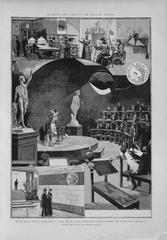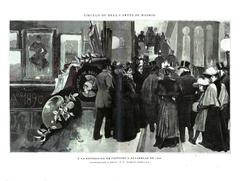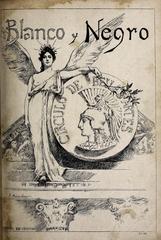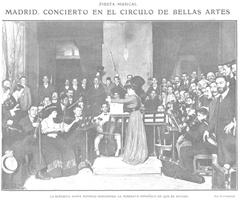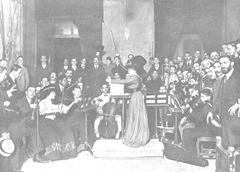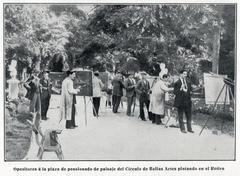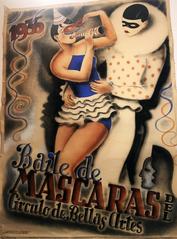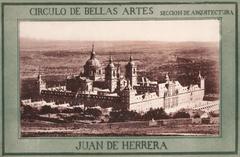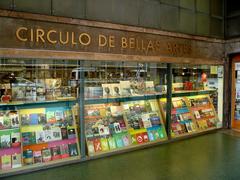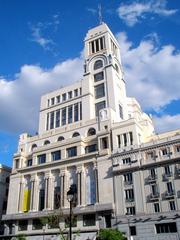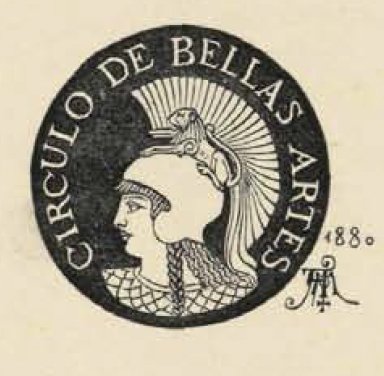
Círculo de Bellas Artes Madrid: Complete Guide to Visiting Hours, Tickets, History & Cultural Highlights
Date: 14/06/2025
Introduction
Nestled in the heart of Madrid, the Círculo de Bellas Artes (CBA) is an emblematic institution celebrated for its fusion of artistic excellence, intellectual discourse, and community engagement. Founded in 1880, the CBA has evolved into a multidisciplinary hub, bridging fine arts, literature, music, philosophy, and social activism. Its architectural marvel—designed by Antonio Palacios and inaugurated in 1926—stands out with its neoclassical and modernist features, crowned by the iconic Minerva sculpture atop a rooftop terrace offering breathtaking city views. This guide provides a comprehensive overview of the CBA’s history, architectural significance, visitor information, and insider tips, ensuring you make the most of your visit to this cornerstone of Madrid’s cultural landscape.
For the most current information, always consult the official Círculo de Bellas Artes website, and discover further insights on Madrid’s culture through platforms like Wanderlog and Patrimonio Actual.
Table of Contents
- Historical Overview
- Cultural Significance
- Visitor Information
- Frequently Asked Questions (FAQ)
- Summary & Recommendations
- References
Historical Overview
Origins and Foundation
The Círculo de Bellas Artes was established in 1880 by a collective of artists and intellectuals seeking a dedicated space for creative exchange independent of academic or governmental oversight. Initially operating from various locations, the society quickly became a nexus for painters, sculptors, musicians, and writers, gaining prestige and playing a pivotal role in Madrid’s burgeoning artistic scene (Círculo de Bellas Artes - Official Site).
Architectural Evolution
By the 1920s, the need for a permanent headquarters became apparent. The CBA commissioned Antonio Palacios, a renowned architect, to design a purpose-built edifice that would reflect its ambitions. Construction began in 1921 at the intersection of Calle de Alcalá and Gran Vía, and the building was inaugurated in 1926 (Hidden Architecture).
Palacios’ design masterfully blends monumental neoclassical elements with art deco and modernist influences. The building’s exterior features a pyramidal silhouette and eclectic ornamentation, while the grand staircase hall serves as its central axis. Originally, the CBA included amenities such as a theater, library, exhibition halls, and recreational facilities—reflecting its function as both a cultural and social club.
The bronze Minerva sculpture by Juan Luis Vassallo, perched 56 meters above the city, has become a symbol of the CBA’s dedication to the arts and wisdom.
Cultural Significance
Since its inception, the CBA has been a pivotal force in Madrid’s cultural life, championing avant-garde movements, hosting groundbreaking exhibitions, and providing a platform for intellectual debate. It has weathered periods of political upheaval—serving as a haven during the Spanish Civil War and Franco dictatorship—and emerged as a symbol of cultural renewal in democratic Spain.
The CBA’s programming is renowned for its diversity, featuring exhibitions by artists such as Francis Bacon and Picasso, along with music, theater, dance, and interdisciplinary festivals (Patrimonio Actual, TechBullion). It also hosts lectures and debates with leading global thinkers, addressing contemporary issues from climate change to social justice (Madrid Actual).
Educational initiatives, such as Escuela SUR and Madrid31 workshops, nurture emerging talent and foster cross-generational collaboration. The institution’s commitment to accessibility, sustainability, and inclusivity ensures its continued relevance.
Visitor Information
Visiting Hours & Tickets
- General Hours: Daily, 10:00 AM – 10:00 PM
- Rooftop Terrace: 10:00 AM – 12:00 AM (weather permitting)
- Special Events: Hours may extend; check the official website for updates
Ticket Prices:
- General Admission: €7
- Reduced (students, seniors): €5
- Children under 12: Free
- Rooftop terrace: Approx. €5 (separate ticket)
- Combo tickets and discounts for exhibitions and events available
- Purchase online or at the venue (Official Tickets)
Accessibility & Amenities
- Accessibility: Elevators and ramps throughout; assistance available upon request.
- Amenities: Café (La Pecera), rooftop bar/restaurant, bookstore, and library.
Guided Tours & Events
- Guided tours (Spanish/English) provide deeper insights into the CBA’s history, architecture, and exhibitions—advance reservation recommended.
- The CBA hosts regular concerts, film screenings, workshops, family activities, and open-air events on the rooftop (Círculo de Bellas Artes - Events Calendar, Tomaticket).
Highlights & Photographic Spots
- Rooftop Terrace: Panoramic views of Madrid, including Gran Vía and the Palacio de Cibeles—ideal for photography.
- Grand Staircase Hall: Striking interior architecture.
- Sala de Columnas: Impressive event space with classical columns.
- Minerva Sculpture: Iconic city landmark.
How to Get There
- Address: Calle de Alcalá, 42, 28014 Madrid, Spain
- Metro: Banco de España (Line 2)
- Bus: Multiple lines nearby
- Parking: Limited—public transport recommended
Nearby Attractions
- Puerta del Sol: 10-minute walk
- Prado Museum: 15-minute walk
- Retiro Park: 20-minute walk
- Gran Vía & Palacio de Cibeles: Just steps away
Frequently Asked Questions (FAQ)
Q: What are the current visiting hours?
A: Typically 10:00 AM to 10:00 PM; rooftop terrace until midnight. Closed on select holidays.
Q: How much do tickets cost?
A: General admission is €7; discounts for students/seniors; children under 12 free; rooftop access ticketed separately.
Q: Is the building accessible for visitors with reduced mobility?
A: Yes, with elevators, ramps, and assistance services.
Q: Are guided tours available?
A: Yes, in Spanish and English, often including special access and expert commentary.
Q: Can I photograph inside?
A: Photography is allowed in public areas and on the rooftop; restrictions may apply in certain exhibitions.
Q: How do I get to the CBA?
A: It is centrally located, accessible by metro (Banco de España), bus, or on foot from major city landmarks.
Summary & Recommendations
The Círculo de Bellas Artes is a vital component of Madrid’s cultural heritage—an institution that bridges the city’s historic past and dynamic present. With its landmark architecture, diverse exhibitions, and lively events, the CBA appeals to art lovers, history buffs, and curious travelers. Its commitment to accessibility, inclusivity, and innovation ensures that every visitor finds something inspiring.
To fully experience the CBA, check the latest visiting hours and event schedules on the official website. Don’t miss the rooftop terrace for the city’s finest views, and explore nearby attractions for a comprehensive Madrid cultural experience. Enhance your visit with audio guides and personalized tours via the Audiala app, and stay connected by following CBA’s social media channels.
References
- Círculo de Bellas Artes - Official Site
- Hidden Architecture
- Teatro Madrid
- Wanderlog
- Patrimonio Actual
- TechBullion
- Tomaticket
- Educa University
- Avanzert

